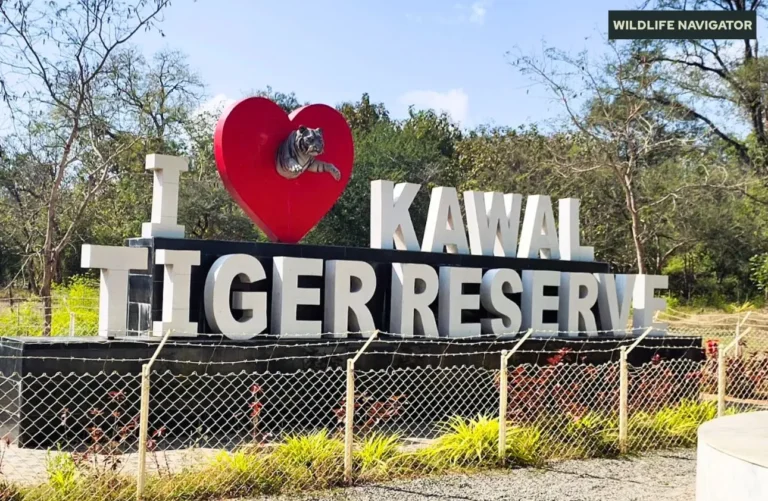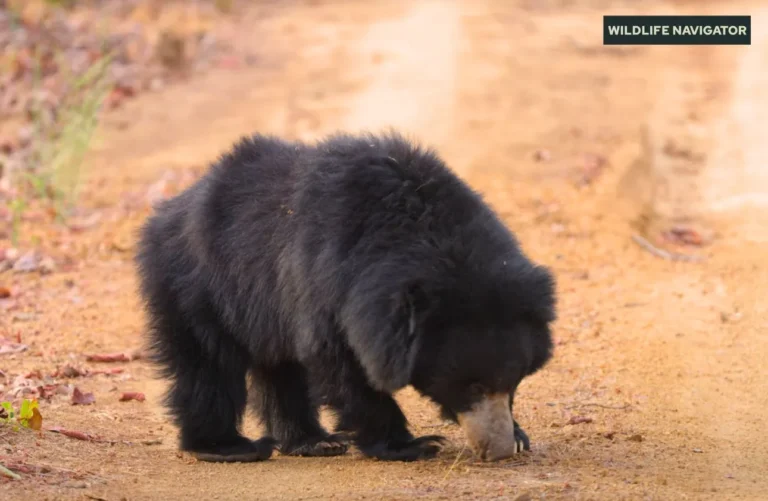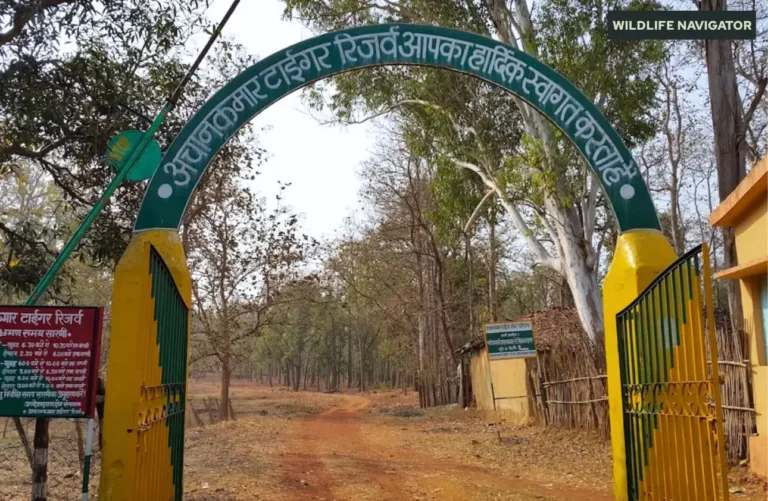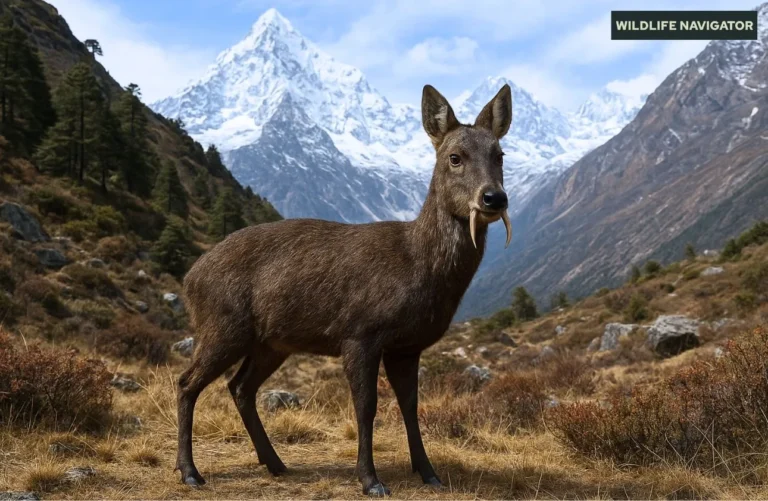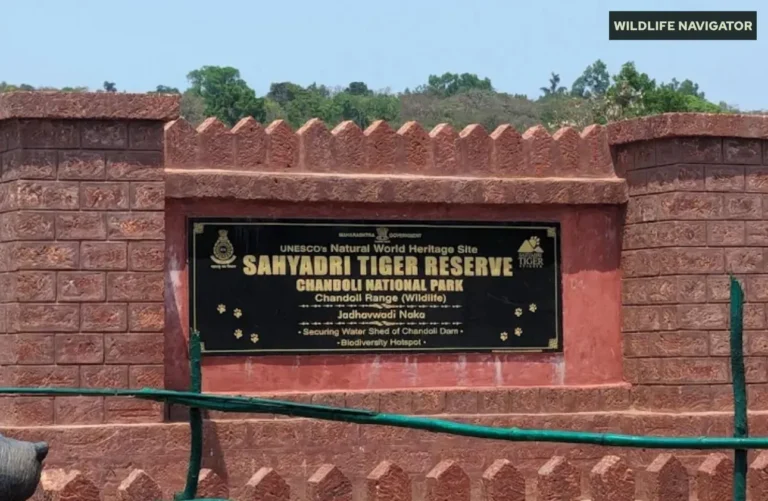Satkosia Tiger Reserve, Odisha’s Gateway to the Eastern Ghats and River Gorges
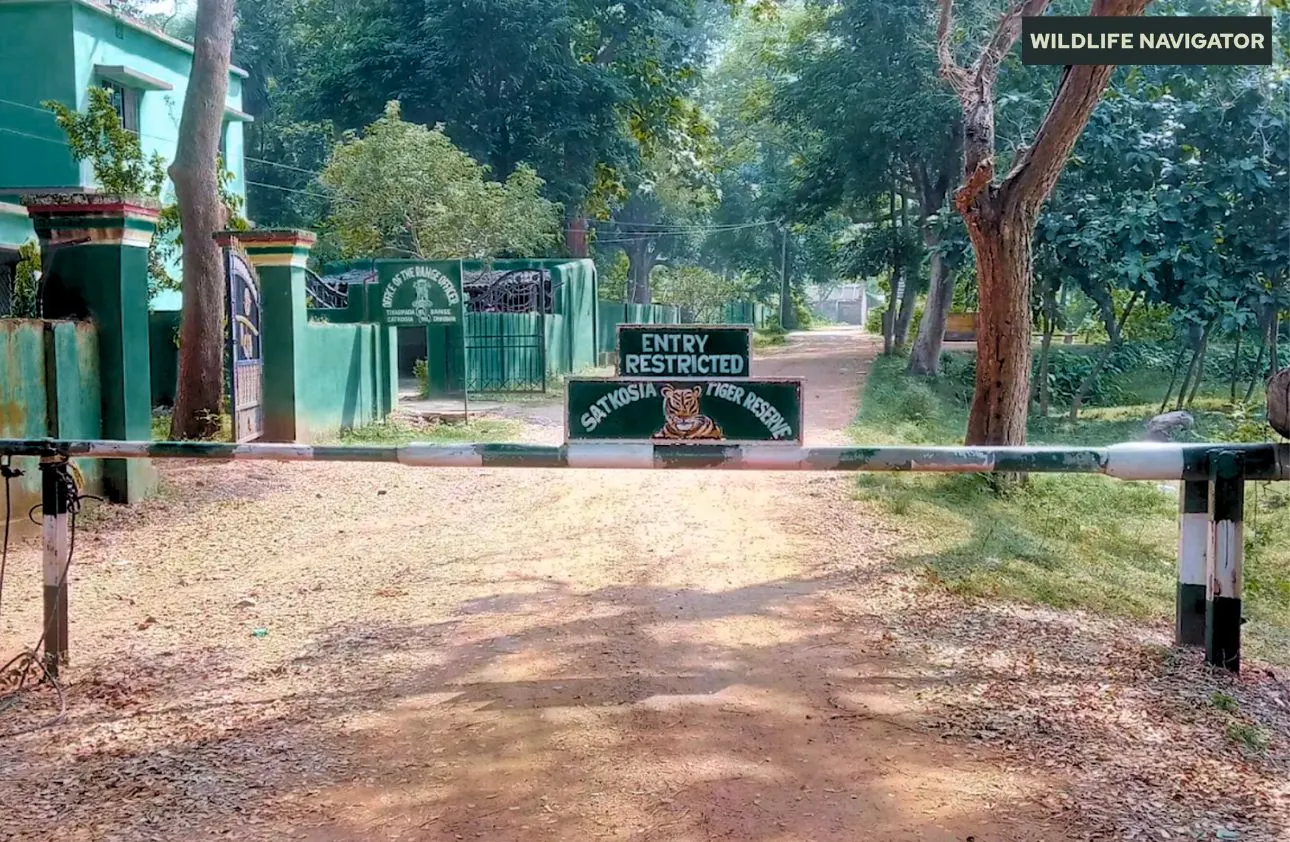
Satkosia Tiger Reserve, located in the heart of Odisha, is one of India’s most picturesque and ecologically important wildlife destinations. Spread across the Angul, Nayagarh, and Cuttack districts, it covers an area of about 963 square kilometres. What makes Satkosia truly unique is that it encompasses two adjoining protected areas — the Satkosia Gorge Sanctuary and the Baisipalli Sanctuary — together forming a vast and diverse tiger reserve.
The reserve is famous for its breathtaking landscapes, where the Mahanadi River cuts through the Eastern Ghats, creating a dramatic 22-kilometre-long gorge that supports an extraordinary range of life. This unique ecosystem sustains both terrestrial and aquatic species, including tigers, leopards, elephants, mugger crocodiles, and freshwater turtles.
Beyond its wildlife, Satkosia plays a crucial role in India’s tiger conservation program under the National Tiger Conservation Authority (NTCA). It also serves as a vital ecological corridor, linking different forest regions of Odisha. For visitors, Satkosia offers a perfect mix of adventure and tranquility — from thrilling jeep safaris and serene boat rides to immersive eco-stays amid pristine wilderness.
History & Establishment
Satkosia Tiger Reserve was officially declared a tiger reserve in 2007, becoming an essential part of India’s National Tiger Conservation Plan. However, its significance as a wildlife habitat dates back much earlier. The region has long been home to dense forests, rugged river gorges, and a variety of wildlife, making it an important ecological zone even before formal protection measures were implemented.
Historically, Satkosia has been closely associated with local tribal communities who have lived in and around the forests for generations. These communities traditionally depended on the forest for their livelihoods, using its resources sustainably while maintaining a rich cultural connection with nature. The government and conservation authorities have since worked to involve these communities in preservation efforts, ensuring that both wildlife and local traditions coexist harmoniously.
Over the years, the reserve has undergone several developments to enhance wildlife protection, including the construction of forest rest houses, patrolling networks, and habitat management programs. Its establishment as a tiger reserve has significantly strengthened anti-poaching measures, improved wildlife monitoring, and attracted eco-tourism, which has helped raise awareness about conservation.
Today, Satkosia stands as a model of combining ecological importance with community involvement, balancing the protection of endangered species like the Bengal tiger with the socio-economic needs of the people who live in its vicinity.
Geography & Landscape
Satkosia Tiger Reserve is spread across the Angul and Cuttack districts of Odisha, covering approximately 963 square kilometres. Its most striking geographical feature is the Satkosia Gorge, where the Mahanadi River cuts through the Eastern Ghats, creating dramatic cliffs and deep valleys. This gorge not only shapes the landscape but also supports a unique riverine ecosystem, making the reserve a fascinating blend of terrestrial and aquatic habitats.
The terrain is diverse, ranging from undulating hills and dense forests to open grasslands and riverbanks. The forests are primarily mixed deciduous, interspersed with bamboo groves, sal trees, and other indigenous flora. These varied habitats provide shelter and food for a wide array of wildlife, including tigers, leopards, elephants, wild boars, and various species of deer.
The climate of Satkosia is typically tropical, with hot summers, moderate monsoons, and mild winters. The monsoon season transforms the forest and river areas into lush green landscapes, while winter offers clear skies and better wildlife visibility, making it an ideal time for safaris and birdwatching.
The unique combination of gorges, riverine plains, and dense forests gives Satkosia its ecological richness and scenic charm. Its geography not only supports a wide variety of flora and fauna but also makes it an attractive destination for eco-tourists, wildlife photographers, and nature enthusiasts looking for an offbeat experience in Odisha.
Flora & Fauna
Satkosia Tiger Reserve is a biodiversity hotspot, home to a rich variety of plant and animal species. Its forests, riverine habitats, and grasslands create an ecosystem that supports both terrestrial and aquatic life.
Flora
The reserve is dominated by mixed deciduous forests with a variety of vegetation that provides food and shelter for wildlife. Key plant species include:
- Sal Trees (Shorea robusta): Form dense forests, crucial for soil conservation and wildlife shelter.
- Bamboo Groves: Provide cover and food for elephants and other herbivores.
- Teak (Tectona grandis) & Semal (Bombax ceiba): Found in open areas and forest edges.
- Riverine Vegetation: Along the Mahanadi River, including reeds, grasses, and aquatic plants that support fish, amphibians, and water birds.
- Medicinal Plants: Various species used by tribal communities for traditional medicine.
Fauna of Satkosia Tiger Reserve
Satkosia’s diverse habitats support a wide range of mammals, reptiles, birds, and aquatic species.
Mammals:
- Bengal Tiger: The reserve is a critical tiger habitat under India’s tiger conservation plan.
- Indian Leopard: Solitary and elusive, mainly in forested hills.
- Elephants: Frequent the forests and riverbanks.
- Sloth Bear & Wild Boar: Commonly seen in dense forests.
- Deer Species: Including Chital (Spotted Deer), Sambar, and Barking Deer.
- Other Mammals: Jungle cat, jackal, and langurs.
Birds:
Satkosia is a birdwatcher’s paradise with over 200 species recorded. Key species include:
- Kingfisher & White-bellied Sea Eagle: Found along the river.
- Hornbills & Parakeets: In forested areas.
- Migratory Birds: Ducks and storks frequent the wetlands during winter.
Reptiles & Aquatic Life:
- Gharial & Mugger Crocodile: In the Mahanadi River.
- Python & Monitor Lizard: Among terrestrial reptiles.
- Fish Species: The river supports several endemic and migratory fish species vital for the ecosystem.
Satkosia’s flora and fauna are intricately connected, with each species playing a role in maintaining the ecological balance. The combination of riverine, forest, and grassland ecosystems makes this reserve unique in terms of biodiversity and offers multiple opportunities for wildlife observation and research.
Safari & Wildlife Experience
Visiting Satkosia Tiger Reserve is a thrilling experience for wildlife enthusiasts, offering multiple ways to explore its forests, river, and gorges. The reserve provides opportunities for spotting tigers, leopards, elephants, and a wide variety of birds in their natural habitat. To make the most of a visit, here are the key safari and wildlife experiences:
Types of Safaris in Satkosia Tiger Reserve
- Jeep Safari: Explore the dense forest areas and grasslands. Best for spotting large mammals like tigers, elephants, and deer.
- Boat Safari: Cruise along the Mahanadi River to observe aquatic life, riverine birds, and scenic gorges. Ideal for photography and birdwatching.
- Walking Trails: Guided nature walks allow visitors to explore the forest closely, learn about flora, and track smaller wildlife.
Best Timings for Wildlife Viewing
- Early Morning (6 AM – 10 AM): Animals are most active; ideal for jeep safaris.
- Late Afternoon (3 PM – 6 PM): Tigers and leopards may be seen near water sources.
- Season: October to March offers pleasant weather and better visibility.
Wildlife Photography Tips
- Carry a telephoto lens for capturing elusive animals.
- Be patient and maintain quiet observation.
- Use the river safari for unique shots of aquatic life and birds.
Other Experiences
- Birdwatching at riverbanks and forest clearings.
- Spotting reptiles and amphibians along the river and marshy areas.
- Learning about the reserve’s ecology from trained guides.
By combining jeep safaris, boat trips, and guided walks, visitors get a comprehensive wildlife experience, making Satkosia a must-visit destination for nature lovers and adventure seekers alike.
Accommodation & Facilities
Visitors to Satkosia Tiger Reserve have several options for staying within or near the reserve, ranging from forest guest houses to eco-resorts. Accommodations cater to different budgets while providing easy access to safaris and guided tours.
Forest Guest Houses & Rest Houses
- Managed by Odisha Forest Department
- Comfortable rooms with basic amenities: beds, attached bathrooms, and electricity
- Close to key wildlife zones for early morning safari access
- Approximate charges: ₹1,500–₹3,000 per night
- Booking is recommended in advance through the Odisha Forest Department website or local forest offices
Eco-Resorts & Lodges
- Private resorts near the reserve offering modern comforts and eco-friendly experiences
- Facilities often include: restaurants, nature trails, guided tours, and riverfront views
- Approximate charges: ₹3,500–₹7,000 per night, depending on the season and room type
- Ideal for travellers seeking a mix of wildlife experience and comfort
Camping & Adventure Stays
- Organised by private operators and local tourism agencies
- Options for tented camps or riverbank camping along the Mahanadi
- Provides a rustic experience close to nature with bonfires, jungle walks, and night-time wildlife sounds
- Approximate charges: ₹1,000–₹2,500 per person per night
- Best during the dry season (October to March) for safe camping
Facilities & Visitor Support
- Guided safari services: available through forest department and private operators
- Food and refreshments: at resorts or arranged by forest rest houses
- Parking & transportation: jeep rentals and boats for river safaris
- Safety measures: trained guides, first-aid kits, and clear signage on wildlife rules
Staying inside or near the reserve ensures visitors can maximise wildlife sightings during early mornings and late evenings, making their Satkosia experience memorable while supporting sustainable tourism.
How to Reach Satkosia Tiger Reserve
Satkosia Tiger Reserve is well-connected by road, rail, and air, making it accessible for travellers from across India. Here’s a detailed guide on how to reach the reserve:
By Air
- Nearest Airport: Bhubaneswar (Odisha’s capital) – approximately 200 km from Satkosia
- Alternate Airport: Jharsuguda or Raipur (Chhattisgarh) for travellers coming from western India
- Travel Tips: From Bhubaneswar, travellers can hire a taxi or take a combination of bus and taxi services to reach the reserve. A journey by road takes around 5–6 hours.
By Rail
- Nearest Railway Stations: Angul (60 km), Cuttack (180 km), and Bhubaneswar (200 km)
- Regular trains connect these stations to major cities like Delhi, Kolkata, Chennai, and Mumbai.
- From the railway station, private taxis, buses, or pre-arranged forest transport can take you to Satkosia.
By Road
- Satkosia is well-connected via National and State Highways.
- From Bhubaneswar: 200 km via NH55, around 5–6 hours by car or bus
- From Cuttack: 180 km, approximately 4–5 hours
- Bus Services: Odisha State Road Transport Corporation (OSRTC) and private buses operate routes connecting Satkosia to nearby towns and cities
- Tips: Hiring a private car offers flexibility for safari timings and stops along the Mahanadi River
Travel Tips
- Start early in the morning for better wildlife spotting chances upon arrival.
- Check local weather and road conditions, especially during monsoon season, as some routes may be affected by rain.
- Pre-book accommodations and safaris to avoid last-minute hassles.
With these options, visitors can plan their journey to Satkosia conveniently, ensuring a smooth start to their wildlife adventure.
Conservation & Challenges
Satkosia Tiger Reserve plays a vital role in India’s wildlife conservation network, particularly in protecting Bengal tigers and other endangered species. The reserve is part of the National Tiger Conservation Authority (NTCA) program, which implements anti-poaching measures, habitat management, and scientific monitoring of wildlife populations. Regular patrolling by forest staff, use of camera traps, and community involvement help prevent illegal hunting and ensure the safety of tigers, elephants, and other animals.
Conservation Efforts
- Tiger and Wildlife Monitoring: Camera traps, GPS tracking, and regular population surveys
- Habitat Management: Restoration of grasslands, prevention of deforestation, and riverbank conservation
- Community Involvement: Educating and employing local tribal communities as forest guides and conservation volunteers
- Research and Education: Collaborations with universities and wildlife organisations for ecological studies
Challenges
- Human-Wildlife Conflict: Crop damage, livestock predation, and occasional encounters with wild animals in nearby villages
- Poaching and Illegal Logging: Despite strict surveillance, threats to wildlife and forest resources persist
- Tourism Pressure: Unregulated tourism can disturb animal habitats if visitors do not follow guidelines
- Climate Change and Habitat Degradation: Changing rainfall patterns and river ecosystem changes affect flora and fauna
How Visitors Can Help
- Follow all forest rules and guidelines during safaris
- Avoid littering or disturbing wildlife
- Support eco-friendly accommodations and local conservation initiatives
- Participate in awareness programs organised by forest authorities
Through these efforts, Satkosia is slowly balancing wildlife protection with sustainable tourism, ensuring that the reserve continues to thrive as a safe habitat for tigers and other species while allowing visitors to experience its natural beauty responsibly.
Nearby Attractions
Satkosia Tiger Reserve is not only a destination for wildlife enthusiasts but also a hub for exploring the natural and cultural heritage of Odisha. Several nearby attractions complement a visit to the reserve, offering travellers a mix of adventure, history, and local experiences.
Wildlife and Nature Spots
- Bhimkund: A natural water tank known for its clear blue water, surrounded by scenic landscapes, ideal for photography and short treks.
- Debrigarh Wildlife Sanctuary: Located about 100 km from Satkosia, this sanctuary is home to elephants, leopards, and a variety of birds, making it a perfect addition for nature lovers.
- Mahanadi River Adventures: Apart from safaris in Satkosia, visitors can enjoy boating, angling, and riverside picnics along the Mahanadi.
Cultural and Historical Sites
- Dhenkanal Palace: About 120 km away, this historical palace showcases Odisha’s royal heritage and architecture.
- Tribal Villages: The region around Satkosia is inhabited by indigenous tribes. Guided visits offer insights into their traditional lifestyle, crafts, and folklore.
- Local Temples: Small temples near Angul and Cuttack provide glimpses into local religious practices and architecture.
Day-Trip Options
- Angul Town: Known for its industrial history and local markets, it is a convenient stopover on the way to Satkosia.
- Cuttack City: Famous for its silver filigree work and historical landmarks, located about 180 km from the reserve.
These nearby attractions make Satkosia Tiger Reserve an ideal base for multi-day trips, allowing visitors to combine wildlife experiences with cultural exploration, adventure, and relaxation.
Conclusion
Satkosia Tiger Reserve is a remarkable destination that perfectly combines wildlife conservation, natural beauty, and adventure opportunities. From the elusive Bengal tiger and majestic elephants to the lush forests and dramatic Mahanadi Gorge, the reserve offers a rich and immersive experience for nature lovers, photographers, and eco-tourists alike.
Its importance goes beyond tourism, serving as a critical hub for tiger conservation and preserving Odisha’s unique biodiversity. By protecting habitats, involving local communities, and promoting sustainable tourism, Satkosia continues to thrive as a safe haven for wildlife while offering visitors a chance to witness the wonders of the wild.
Whether you are on a jeep safari through dense forests, a boat ride along the Mahanadi, or exploring the surrounding cultural and natural attractions, a visit to Satkosia promises memorable experiences and lifelong memories. For anyone seeking an offbeat wildlife destination in India, Satkosia Tiger Reserve stands out as a must-visit location where adventure meets conservation, and nature reveals its true splendour.
FAQs: Satkosia Tiger Reserve
1. In which state is Satkosia Tiger Reserve?
Satkosia Tiger Reserve is located in the state of Odisha, India. It spans the Angul and Cuttack districts along the Mahanadi River.
2. Why is Satkosia famous?
Satkosia is famous for its Bengal tigers, rich biodiversity, and the Satkosia Gorge, where the Mahanadi River cuts through the Eastern Ghats. It is also known for its dense forests, riverine ecosystem, and eco-tourism opportunities such as safaris and birdwatching.
3. Where is the smallest tiger reserve in India?
The smallest tiger reserve in India is Sariska Tiger Reserve in Rajasthan, covering around 866 square kilometers, smaller than many other tiger reserves, including Satkosia.
4. Which is the nearest railway station to Satkosia?
The nearest railway station to Satkosia Tiger Reserve is Angul Railway Station, approximately 60 km away. Other nearby stations include Cuttack (180 km) and Bhubaneswar (200 km), which are connected to major cities across India.

